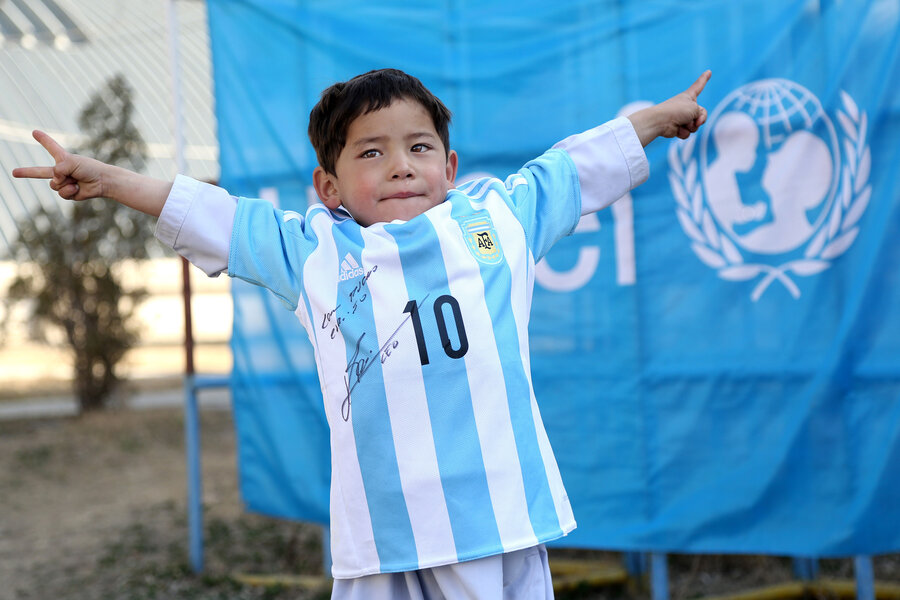Afghan child gets a Lionel Messi jersey: How sports build bridges
The lives of an international soccer star and a 5-year-old from a rural village in Afghanistan may not appear much alike, but the two are connected by passion for the sport.
International soccer fans were impressed with a photo of a young Afghan boy that went viral on social media in January. The boy, 5-year-old Murtaza Ahmadi, wore a Lionel Messi Barcelona soccer jersey made from a plastic bag, Chris Borg reported for CNN. Murtaza is a major Messi fan who wanted to wear his passion on his sleeve.
"I told [Murtaza] that we were living in a poor village far from the city and it was impossible for me to get him the shirt," Murtaza's father, Arif Ahmadi, told CNN. "He kept crying for days asking for the shirt until his brother Hamayon helped him make one from the plastic bag to make him happy."
The photo led to an international search for Murtaza Ahmadi, who some incorrectly guessed was from Iraq, and UNICEF met him on Wednesday. Mr. Messi, a five-time world player of the year, missed the meeting but sent an autographed soccer ball and two signed jerseys, and Messi's club Barcelona told CNN it would be willing to facilitate a meet-up in-person.
The incident highlights the global potential of sport, as sometimes a soccer field is all the common ground people need. Although the most obvious example is the Olympics, international organizations are increasingly using athletics to build bridges of understanding.
Another young man experienced cross-cultural connection through sports and developed an organization to share it. As a former varsity athlete, Wesley Boone was struck by a documentary about Guatemala that showed children playing pick-up soccer, he told The Christian Science Monitor last year.
“A group of children were playing soccer on a concrete surface, barefoot, and kicking rocks and pieces of trash as the soccer ball,” Mr. Boone told the Monitor. “Being a soccer player and an athlete my whole life, I was very disappointed to see that those kids weren’t playing with proper sports equipment.”
Now studying philanthropic studies at Indiana University-Purdue University Indianapolis, Boone founded Gear Going Global, which has collected and donated sports gear to thousands of children in 13 developing countries. Boone has even delivered sports equipment in person to children in Thailand.
"Kids will search for days for scraps and pieces of various objects in order to scrap together a ball to play with,” he told the Monitor. “I have seen soccer balls made out of small scraps of clothes, trash, rocks, twine, etc. The lengths that some of the children will go to make a ball is what drives me to try and provide a ball for them.”
Recognizing the potential of sport in "promoting development and peace," the United Nations declared 2005 the International Year of Sport and Physical Education. Sports provide an opportunity to reduce tensions among opposing groups, wrote Adolf Ogi, former president of Switzerland and then-special adviser to the UN Secretary-General:
For individuals, [sports] enhance personal abilities, general health, and self- knowledge. On the national level, they contribute to economic and social growth, improve public health, and bring different communities together. And on the global level, sport and physical education have a long-lasting positive impact on development, public health, peace, and the sustainable management of the environment.
The UN solidified its athletic commitments in 2013 by naming April 6 the International Day of Sport for Development and Peace.






